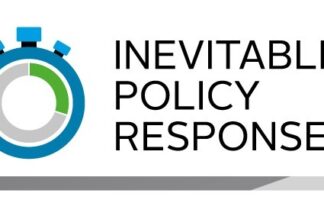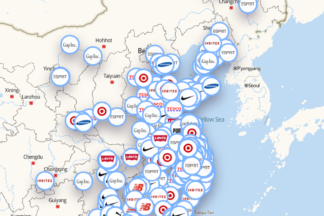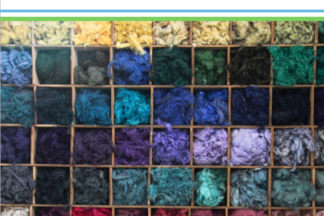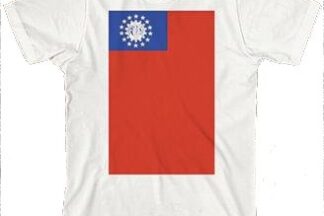What would the Inevitable Policy response mean for the consumer goods industries? What could the effects be? This instalment of a 3-part series looks at: consumption patterns, role of consumer goods industries for economic development, population behaviours when affected by severe conditions
What would the Inevitable Policy response mean for the consumer goods industries? What could the effects be? This instalment of a 3-part series looks at shifts in costing paradigms, in transportation, and in supply chain structures.
Digital tools and IT systems are a great enabler for more data, more stringent channels of how to communicate what the different players in the chain do, and how they do it, over large distances and across operations and organizations.Yet – digital tools are more human than we think they are … because they, in the end, are representatives of the values and the world view of those that have built them.
Wool is slowly recovering some of its former popularity. While for some it is an old acquaintance, for many others in our industry, and in this current time and age, it is a new, or maybe better novel, material for the portfolio. And what about Recycled Wool? This report answers many of the key questions.
For retail, Brazil is the ‘next hot’ place to go to.
For a variety of reasons: For one, the country’s economy has been for a long time up and raising. Brazil is one of the 4 BRIC countries – the 4 most dominant raising economies, and ranks forth among them. Its retail sector is expected to boom tremendously over the next few years owing largely to the two major global sport events – the 2014 FIFA World Cup and Rio 2016 Summer Olympics that will take place in the country.
Since the moment that Burma's opposition Leader, Aung San Suu Ky, was released from her decade of house arrest it was clear: Nothing would remain the same.
Levi Strauss was the very first apparel brand to establish and publish a code of conduct in its industry in 1991. It was also the very first company to determine global guidelines for water quality standards for their suppliers in 1992.
The news is fresh. And it could potentially be some of the most interesting news in the present for cost savvy – and patience as well as unscrupulous investors looking for a somewhat different opportunity: High risk, yes, but potentially with outrageously high returns.
Things in North Korea, secluded for the last 60 years, are undoubtedly changing.
C&A, part of the Cofra Holding that owns C&A Europe, Brazil, Mexico and China, has been a family business since 1841.
The company is quite conservative in communicating corporate responsibility achievements. Their style of communication appears to be more emotional than factual.
The company has been awarded the Textile Exchange Future Shaper award in 2012 recognising the company’s commitment to promoting the analysis and certification of organic cotton and textiles.
In the 1990s Nike was caught in a sweatshop scandal showing poor working conditions in the Asian factories of its suppliers.
Today Nike wants to “bring inspiration and innovation to every athlete in the world”. The evolution of the company’s mission is powerful because it adds meaning and purpose to its existence: from “produce”, to “help” to eventually “inspire and innovate”.
Mistra Future Fashion (MFF) is a 4-year research project (2011-2015), funded by the Swedish government via Mistra, the Foundation of Strategic Environmental Research.
MFF has a very holistic approach that has the goal of supporting the industry to re-think their business models, design and industrial processes and promote consumer behaviour change.
Like its larger sister ISPO – normally taking place at the end of January or the beginning of February, half way between the two Fashion Week cycles – Performance Days feature a high-end portfolio of performance and sports wear manufacturers, many of which actively develop and push the innovation agenda of their industry.
Nigeria’s textile industry used to be – possibly still is – the African continent’s third largest after that of Egypt and South Africa. For one reason or another, the first two are fairly well established among brands of all colours and types as potential – and actual – sourcing destinations. Egyptian cotton is well renowned, as is their industry for jersey goods. Also ‘Made in South Africa’ is not uncommonly found in clothing labels.
The second Future Fabrics Expo was hosted at the London College of Fashion on November 7th – 9th 2013, and was attended by a rather large number designers, buyers and students. Roughly 650 fabrics with a reduced environmental impact stemming from around 50 textile mills world-wide, were showcased, along with inspirational and/or interactive videos and information panels.
ntil the late 80s, fashion retailers and brands would typically have two main collections a year: spring/summer and autumn/winter. Then, in the 90s things changed dramatically. Increased competition saw retailers incentivising customers to visit their stores more frequently.
In the luxury segment, production focuses on highly complex garments and low order volumes that might involve just five pieces per style which makes sourcing very challenging. The approach currently pursued by European high-end apparel brands to address the problem is that of ‘High End Fashion Cluster‘.
The reaping (black market) trade in reptile skins for the luxury fashion and accessories market is an openly talked about, albeit ugly, reality of the present.
The recently published UNCTAD BioTrade report and toolkit provides useful and pragmatic info for designers.





